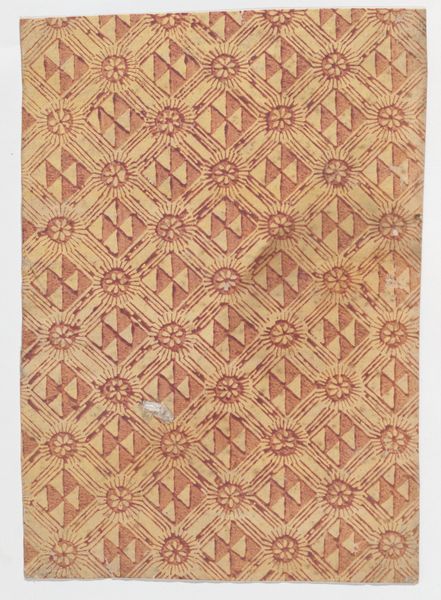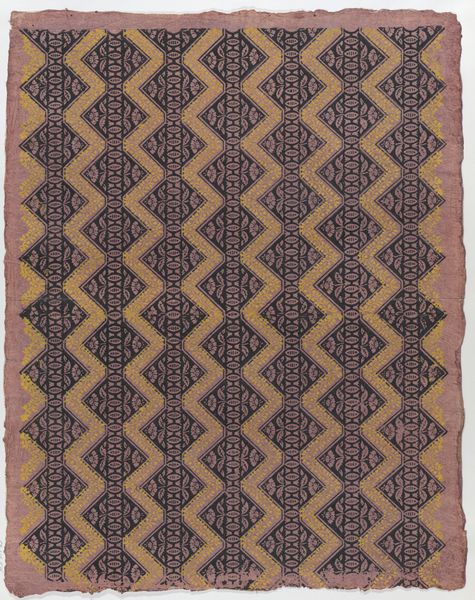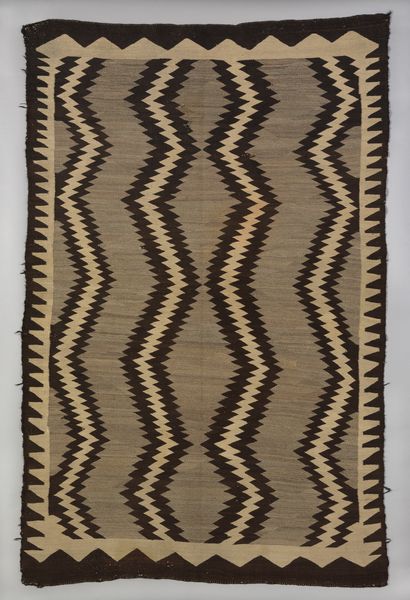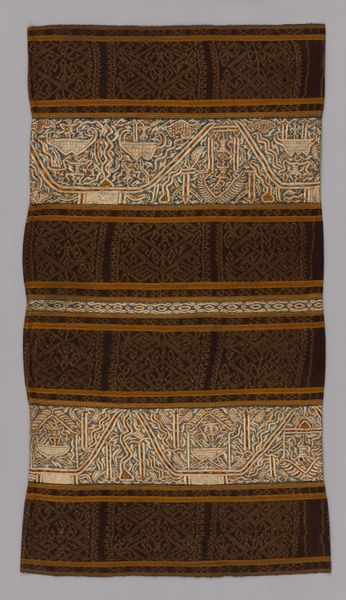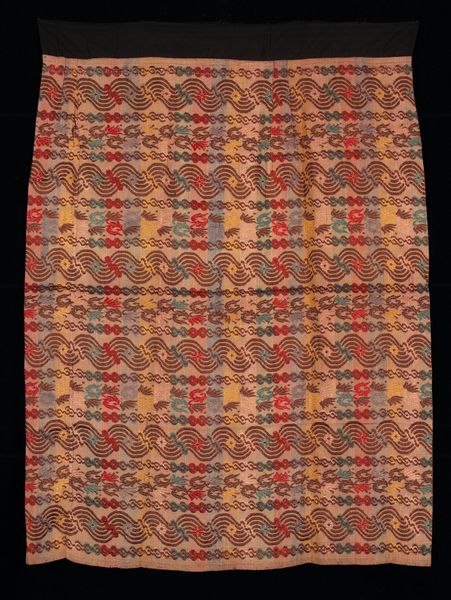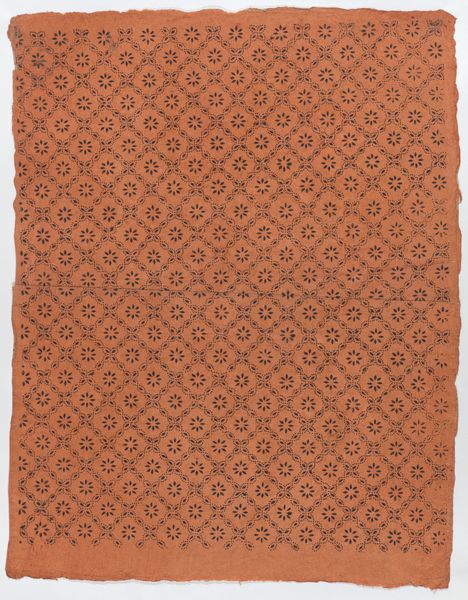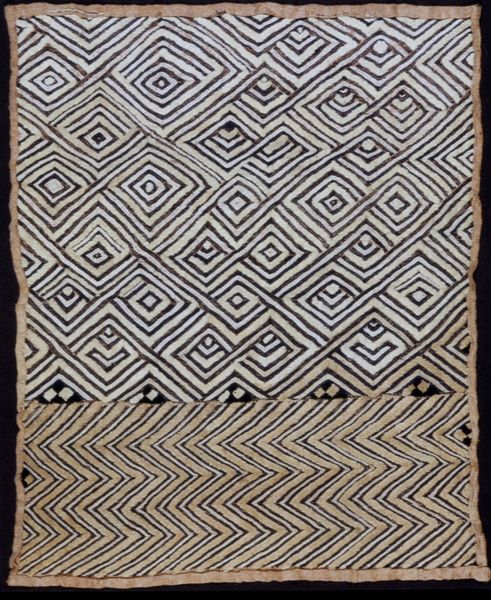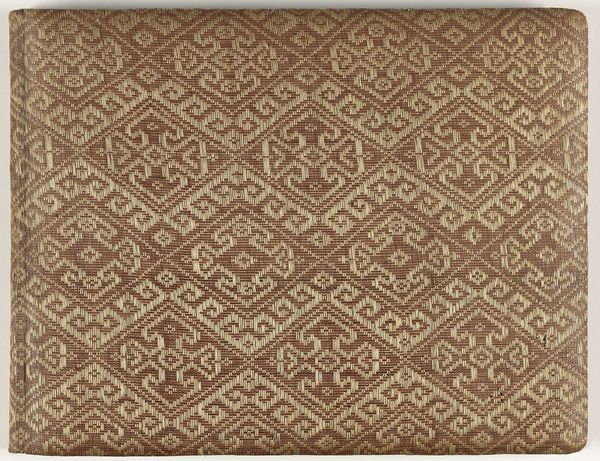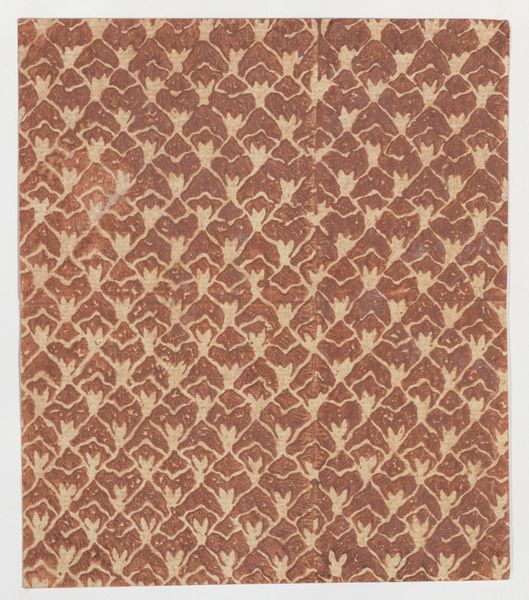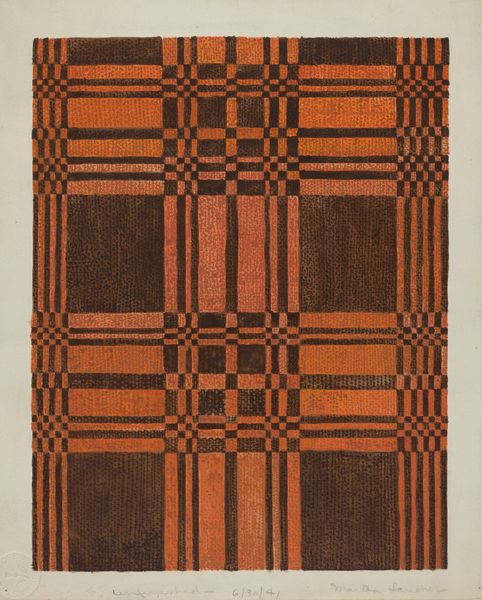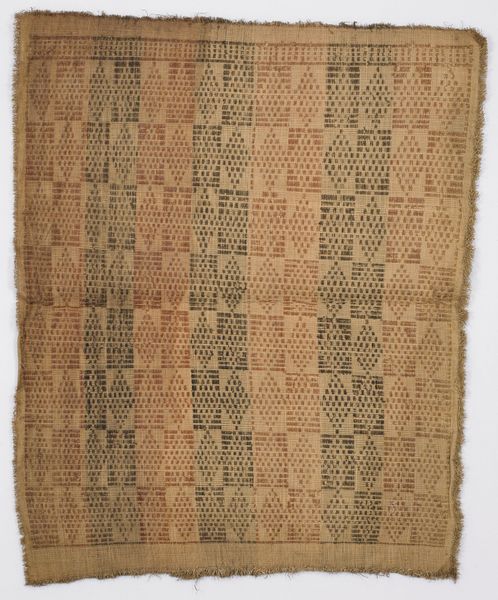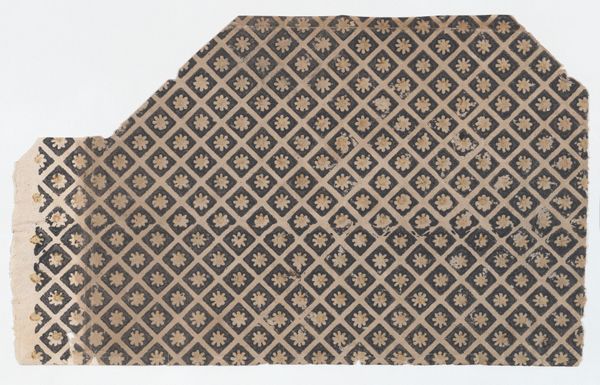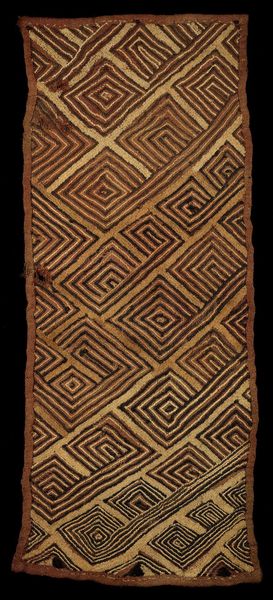
textile
#
textile
#
geometric pattern
#
organic pattern
#
geometric
#
repetition of pattern
#
vertical pattern
Dimensions: 12 3/16 x 24 1/2 in. (30.96 x 62.23 cm)
Copyright: Public Domain
Editor: This is a Kuba panel, a textile piece from around the 20th century. The patterns are really captivating; the repetition feels almost hypnotic. What strikes you most about the formal elements at play here? Curator: Immediately, the eye is drawn to the masterful interplay between positive and negative space created by the contrasting colors. The geometric patterns, primarily diamonds and angular forms, establish a complex visual rhythm. Consider how the artist’s choice of a muted palette affects the overall perception. Editor: I see what you mean. The colors are restrained, aren’t they? Almost earthy. It stops the busy patterns from becoming overwhelming, I think. Curator: Precisely. Observe how the textured surface interacts with light, adding depth and dimension to what would otherwise be a purely two-dimensional work. Are there any particular shapes or repeated design elements that catch your eye? Editor: Definitely the variations on the diamond shapes! Some feel very closed, others almost like incomplete doorways. And then that border, which almost looks hand-stitched… Curator: The artist has orchestrated a symphony of lines and forms, inviting viewers to decipher its unique visual language. By analyzing these intricate design choices, we can begin to understand the artist's vision and intention. The piece challenges us to look beyond the surface and find a deeper understanding. Editor: I see. It’s not just pattern, it’s a visual system with its own rules! Thanks, that's given me a whole new perspective on what's in front of me. Curator: Indeed! And that is the beauty and reward of sustained looking.
Comments
minneapolisinstituteofart almost 2 years ago
⋮
Finely crafted cut pile embroideries are objects of great prestige in Kuba society. Although men and women contribute equally to the production of raffia textiles, this particular form of surface ornamentation is worked only by women. The finest cut pile embroideries, as in this example, combine a flat stem stitch with a tufted plush stitch, resulting in a distinct texture that enhances the overall design of the piece. Patterns used for Kuba embroidery are drawn from over 200 traditional motifs that are also used for woodcarving, basketry, and ceramics. Kuba artists rarely replicate designs exactly, but rather use them as a basis for improvisational experimentation.
Join the conversation
Join millions of artists and users on Artera today and experience the ultimate creative platform.
